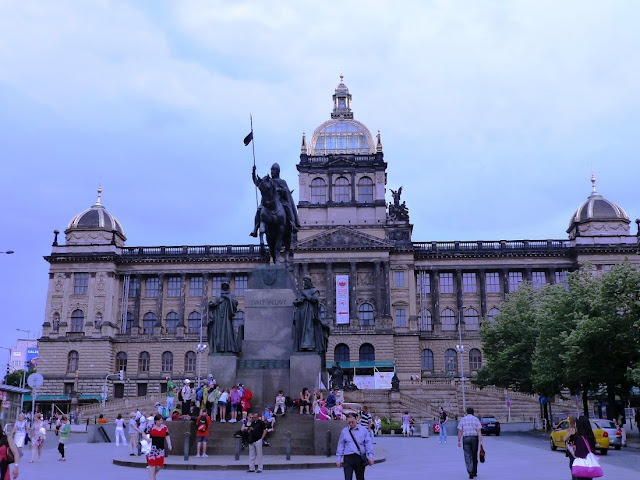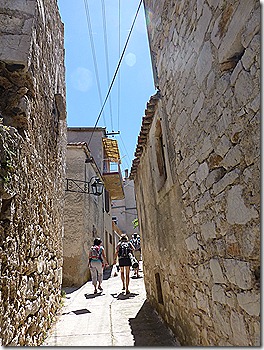http://www.escapetoprague.com/king-wenceslas-3.php

After a brief orientation from the property manager, we were off to explore the city – or at least the King Wenceslas Square and Old Town areas! Prague is a magical city of bridges, cathedrals, gold-tipped towers and church domes.


At one end of Wenceslas Square, in front of the National Museum, is a statue of St. Wenceslas on his horse. This is “Good King Wenceslas” on which the popular Christmas carol was based. He was murdered a thousand years ago by his brother, and is a Czech national hero.

Shops line both sides of the street and we had fun looking at all of the handicrafts.
Old Town was about a fifteen minute walk with shops and historic buildings all around. The Tyn Church, behind the buildings, reminded us of Disneyland!


The Astronomical Clock was first installed on the southern wall of Old Town City Hall in 1410, making it the third-oldest astronomical clock in the world and the oldest one still working. There are three main components: the astronomical dial, representing the position of the Sun and Moon in the sky ; "The Walk of the Apostles", a clockwork hourly show of figures of the Apostles and other moving sculptures striking the time; and a calendar dial with medallions representing the months.


Powder Gate is one of the original 13 entrances to Prague’s Old Town. The Gothic building was built in 1475 and during the 17th century it was used as a gunpowder storage facility. Today it is a reminder of the incredible history of Prague.
 The Smetana Hall located in the Municipal House is one of the many theaters in Prague. The famous concert hall has a seating capacity of 1200 seats and features an original Art Nouveau organ and romantic colorful decor from famous Czech painters and sculptors.
The Smetana Hall located in the Municipal House is one of the many theaters in Prague. The famous concert hall has a seating capacity of 1200 seats and features an original Art Nouveau organ and romantic colorful decor from famous Czech painters and sculptors.We did not go to Smetana Hall. Instead, we saw the popular puppet version of Mozart’s Don Giovanni at the National Marionette Theater. The large puppets are all dressed in period costumes, and performed against 18th century stage sets. The performance was entertaining and just one of the many other wonderful things to do while in Prague!
Next post – Prague Castle and the Charles Bridge.

















































